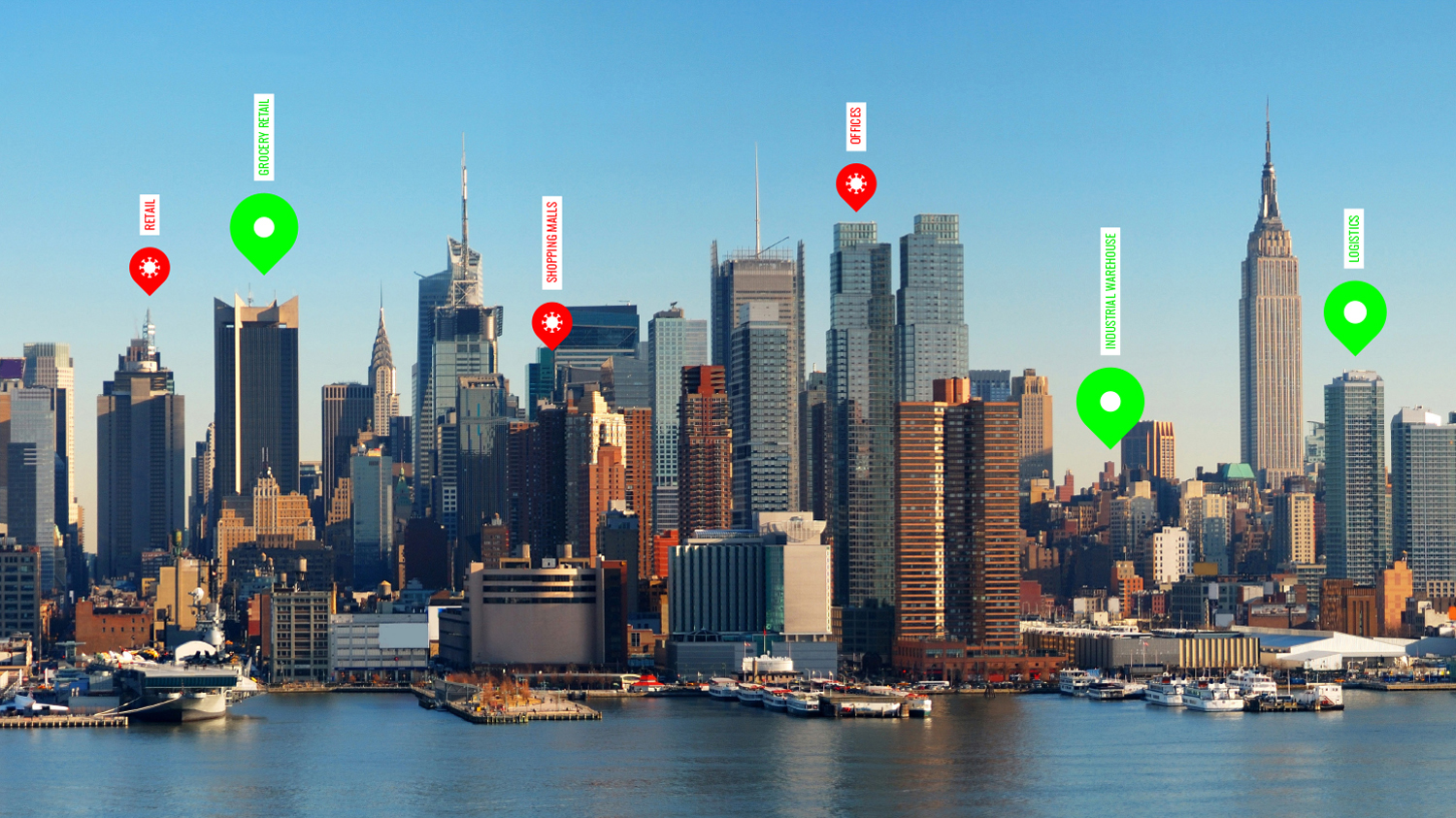
Investment in a post-COVID-19 world: change in the USA
With more than 7 million COVID-19 infections at the time of writing, and more than 200,000 deaths, the US is weathering the worst of the pandemic. It is not merely the country’s size that explains its high numbers. It is among the 10 worst-hit nations for case count per capita, too.
The recession that has ensued will reshape the North American property landscape. Expensive real estate on both US coasts faces its biggest challenge in memory. The pandemic has encouraged a flight out of major cities for health and lifestyle reasons; the shift to working from home means the minions may never climb back into city-centre skyscraper towers in anything like the numbers they once did.
“I’m never going to write the coastal cities off, although I believe they will need to redeploy the advantages they have in place,” says Cate Agnew FRICS, head of real estate valuation for an investment bank and a member of the RICS Americas board. “But I am going to say that location will be one of desire rather than of need.”
The North American cities with the greatest conurbations and the highest cost of real estate may require extensive public-private cooperation in their recovery, and plenty of self-assessment. The US posted a second-quarter economic contraction of 9.5%, its second straight quarterly decline. The drop is on par with the record 9.8% decline for the 37 member nations of the OECD.
For investors looking to position themselves defensively, length of lease and tenant quality are proving key factors. Office space, and indeed many property sectors, face a changing landscape, with a US recession that is still open ended and of a magnitude like few before.
“The fungibility of the space itself will be the story fleshed out over the next 12 to 18 months, as the landscape continues to morph,” Agnew says.
All about the bandwidth
Technology has freed up the North American work force and bandwidth is the key commodity driving any tech gold rush. So long as that can be secured, lifestyle issues will hold sway over location.
“If a business or an individual can choose any area in which to locate that has the infrastructure, inclusive of the tech components, then a region’s desirability swings to the human factor: where does my workforce want to be?” says Agnew.
The much-documented loser out of those industrial gains is American retail. Grocery-anchored retail space has survived, but mall culture as we know it appears to be over. The COVID-19 pandemic has accelerated and cemented trends that were already under way.
The new industrial revolution
Despite the recession, there have also been bright spots on the property landscape. Again, sectors that were experiencing change have seen the pace accelerate to a revolution.
“Industrial is having its moment in the sun, and it’s an interesting asset class,” Agnew says. “Activity has been robust, although not by pre-COVID-19 standards. The ‘why’ has been the customer shift from the bricks-and-mortar retail experience to an ‘acquisition of goods’ mindset.”
In Agnew’s eyes, that means getting what’s needed to be bought to the place that it is used, skipping the interim step of going to a store to obtain it. Industrial delivery comprises the supply chain that takes those goods from the manufacturer through the last mile.
It is coining new ways of doing business, such as a “cross-dock” strategy. That’s where goods arrive in bulk via one door, get broken down into individual delivery units, and leave via the door on the opposite side of the delivery dock (or warehouse), with little to no storage time. “It requires almost military-level logistics and also the real estate that can handle it,” says Agnew.
It also requires new kinds of warehouse and industrial space, which is handy for the investors and developers that make the most of it. Industrial is no longer just for the production or the long-term storage of stock. It’s a highly efficient and highly automated way of getting items from start through to the finish of the chain of consumption.
Agnew is also an advisory board member of Women in PropTech, which promotes female participation globally in the proptech industry. She believes that just as the pandemic has pushed the work-from-home trend in the service sector in general, so too has it pushed the importance of proptech in the real-estate industry. For smart asset management, “the success of any sector of real property is going to have to turn to proptech to gain ongoing insight into its nuances”, she says.
